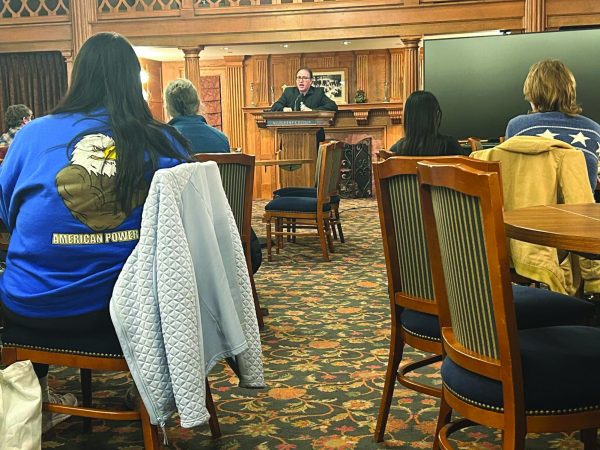It’s not romantic; it’s racist
Although it is the basis for Disney’s Splash Mountain and its song “Zip-a-Dee-Doo-Dah” won an Academy Award and is a household song, Disney would rather we forget about its 1946 live-action/animated movie “Song of the South.”
Despite its extreme racism, we must remember “Song of the South,” for presenting the same antiquated views of the American South and slavery still held today.
“Song of the South” presents the quintessential American view of the South. The movie has everything southern: happy slaves, plantations and Uncle Remus, a character whose only purpose is to aid the film’s white protagonists.
Yes, the film’s use of live action with animation was a technological success that was almost unmatched for forty years. That, however, does not make up for its horrific racism.
The film depicts a rich, white plantation family who are drawn in stark contrast with their slaves. Disney portrays the family’s slaves singing and, inexplicably, happy to be doing physical labor in return for no pay and absolutely brutal conditions.
Every African-American character in the film appears to be living life for the sole purpose of appeasing the white actors. Uncle Remus, who presumably has a family of his own, spends the length of the film helping the white family’s son, Johnny.
The movie’s abhorrently inaccurate depiction of slavery extends the length of the film. When Johnny gets struck by a bull near the end of the film, the family’s slaves apparently have nothing better to do than sing outside the family’s house so the child who put himself in the bullpen can recover.
Disney’s film plays in with the mid-20th century depiction of slavery as an institution that was benign. It should not be held up to contemporary standards. But that is exactly the point.
Very few movies, even today, depict American chattel slavery as brutal and violent as it was.
We should not look at Disney’s “Song of the South” as an anachronistic view of slavery, rooted in a Reconstruction-era Lost Cause mentality. Instead, the film could very easily have been filmed today. The continued success of “Gone with the Wind” shows how, no matter how outdated, the view of a romantic South complete with southern belles, southern gents and outdated views of American race relations still thrives and profits today. Forgetting about “Song of the South” wipes our minds of just one film with antiquated views of slavery. But the legacy of every other film remains.







